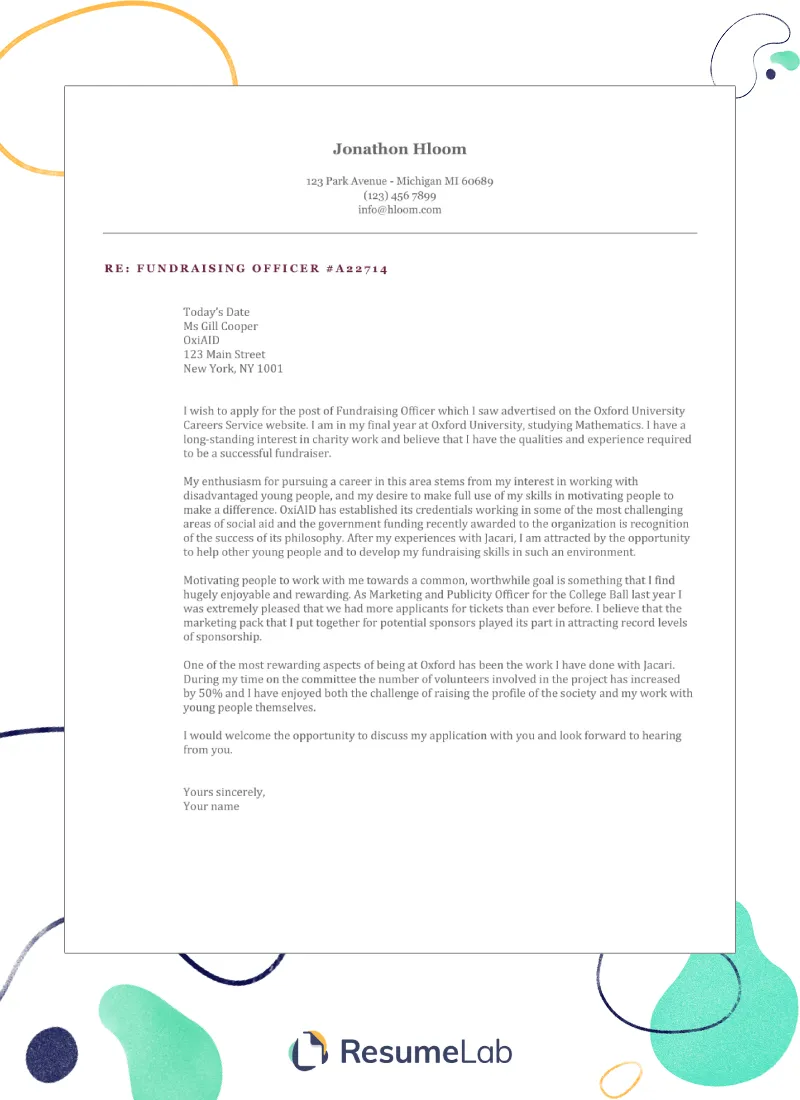What Are Cover Letter Templates?
Cover letter templates are pre-designed documents that provide a framework for creating your own cover letter. They offer a structured format, suggesting sections, and sometimes even providing sample content. These templates save you time and effort, guiding you through the process of writing a compelling cover letter that effectively highlights your skills and experience. They’re essentially blueprints, helping you craft a professional document that captures the attention of hiring managers.
Why Use Cover Letter Templates
Utilizing cover letter templates offers numerous advantages in your job search. Firstly, they save valuable time. Instead of starting from scratch, templates provide a structure, allowing you to focus on personalizing the content. Secondly, templates ensure you include all the essential components, such as a compelling introduction, skill highlights, and a strong closing. This reduces the risk of overlooking crucial information. Furthermore, templates help you maintain a professional and consistent look, which enhances your overall presentation. Lastly, templates can provide inspiration and ideas, especially if you are unsure where to begin.
Key Components of a Cover Letter

Understanding the core sections of a cover letter is essential. These elements work together to showcase your suitability for the role and capture the reader’s attention. These are some of the most important sections to consider.
Header Section
The header typically includes your contact information name, phone number, email address, and sometimes a link to your professional online profile, such as LinkedIn. It should be formatted clearly and professionally so the hiring manager can easily reach you. Ensure this section is accurate and up-to-date.
Greeting
Addressing the hiring manager by name is crucial. Research the hiring manager’s name and use a formal greeting, such as ‘Dear Mr./Ms./Mx. [Last Name]’. Avoid generic greetings like ‘To Whom It May Concern’ whenever possible. If you can’t find a specific name, a general greeting like ‘Dear Hiring Manager’ is acceptable.
Body Paragraphs
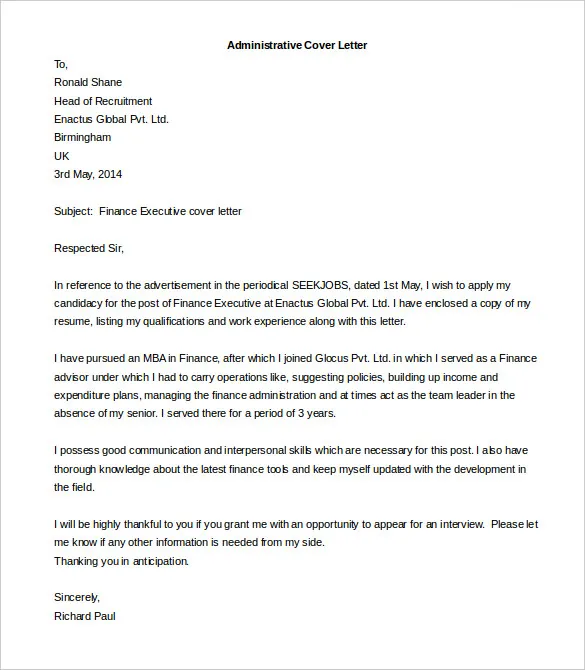
The body paragraphs form the core of your cover letter. This is where you detail your skills, experiences, and why you are a good fit for the role. Structure the body logically, breaking it into a few paragraphs that each focus on a specific aspect of your qualifications. Below are some tips for structuring the body paragraphs effectively:
First Paragraph How to Introduce Yourself
Start with a strong opening sentence that grabs the reader’s attention. State the position you are applying for and where you saw the job posting. Briefly mention your most relevant skills or experience to immediately convey your suitability. Show enthusiasm for the opportunity and the company.
Second Paragraph Show Your Skills
This paragraph should highlight your key skills and how they align with the job requirements. Refer to the job description and identify the most critical skills the employer seeks. Provide specific examples from your past experiences, using the STAR method (Situation, Task, Action, Result) to demonstrate your abilities and quantify your achievements whenever possible.
Third Paragraph Why You Fit the Role
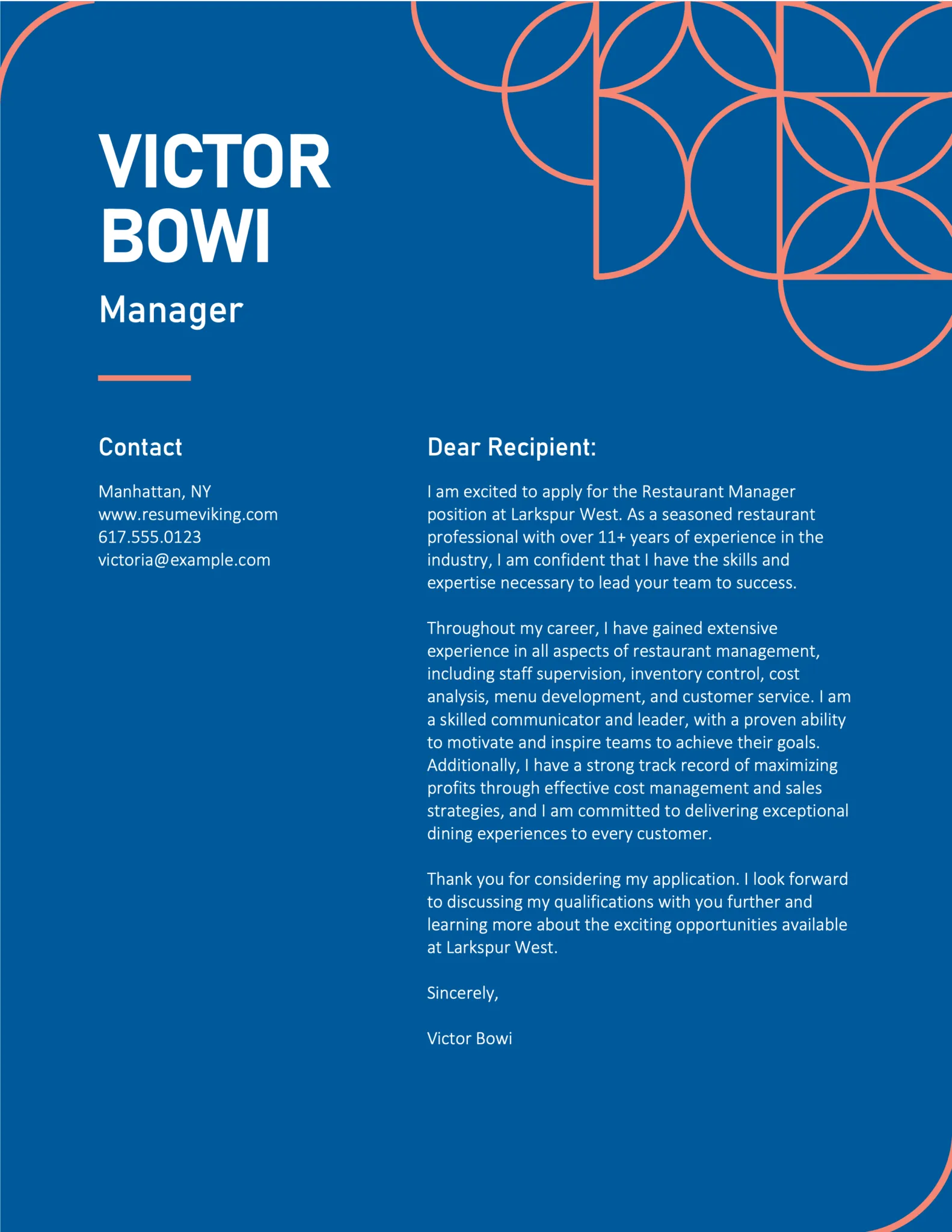
In this paragraph, explain why you are interested in the specific company and role. Show that you have researched the company and understand its mission and values. Connect your career goals with the company’s objectives and emphasize how your skills can contribute to their success. Express your eagerness to learn and grow within the organization.
Closing
Conclude your cover letter with a strong call to action. Reiterate your interest in the position and express your gratitude for the reader’s time and consideration. Include a statement about your availability for an interview and how you can be reached. Keep your tone positive and confident, reinforcing your enthusiasm for the opportunity.
Formatting Your Cover Letter Template
Formatting is crucial for readability and professionalism. Using a well-formatted template ensures your cover letter looks polished. Choose a template with a clear layout, appropriate font size, and sufficient white space. Here’s some information on choosing the right template and using different template styles.
Choosing the Right Template
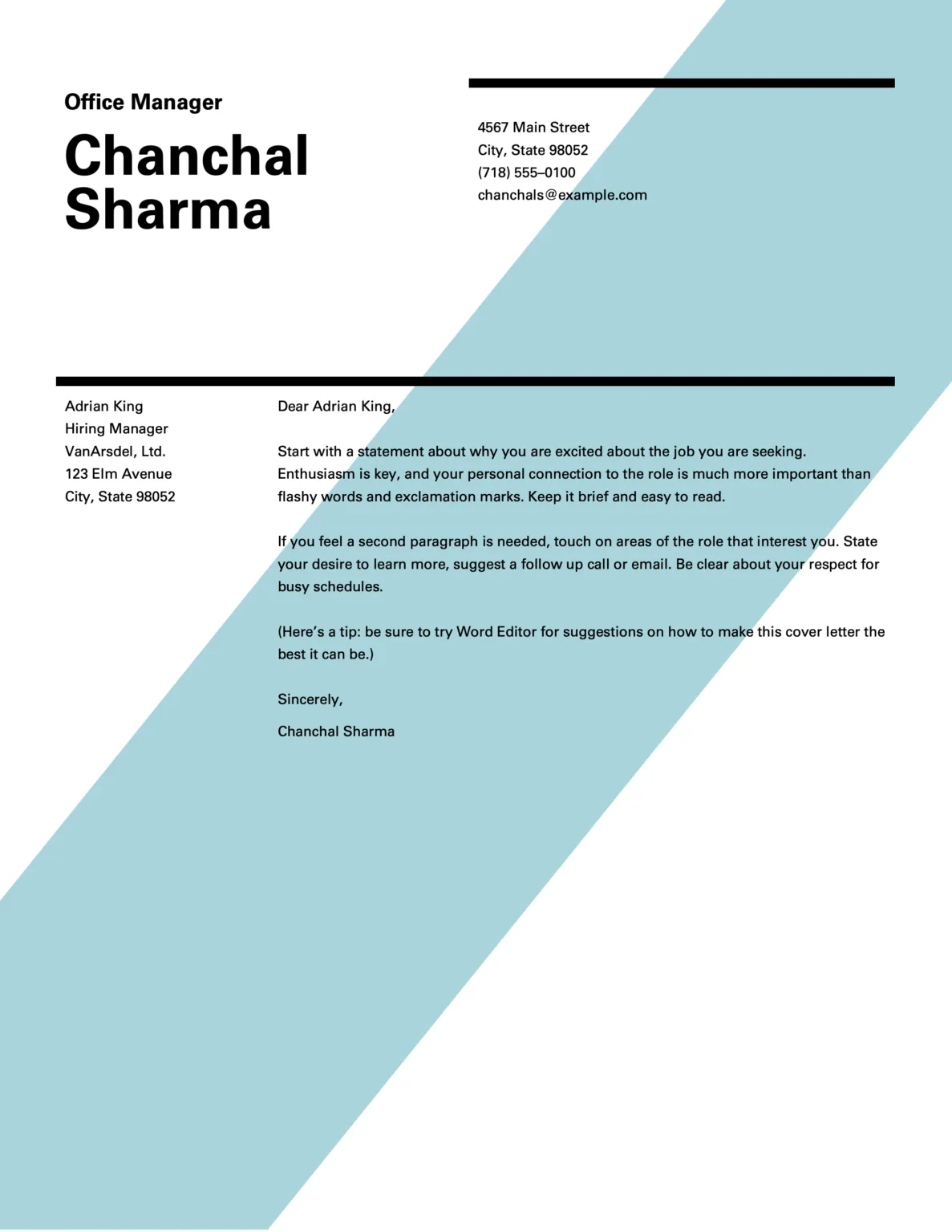
Select a template that aligns with the job and company culture. A traditional template might be suitable for conservative industries, while a modern one can be a better fit for creative fields. Consider your personality and the overall message you want to convey.
Different Cover Letter Template Styles
There are various cover letter template styles. Choosing the right one ensures that it suits the application and the persona of the applicant.
Basic Template
A basic template typically includes a simple design with clear headings and straightforward formatting. This style is timeless and suits a wide range of industries. It emphasizes content and readability, making it an excellent choice for those who want their skills to shine. It presents a clean and professional image, focusing on clarity and conciseness.
Modern Template
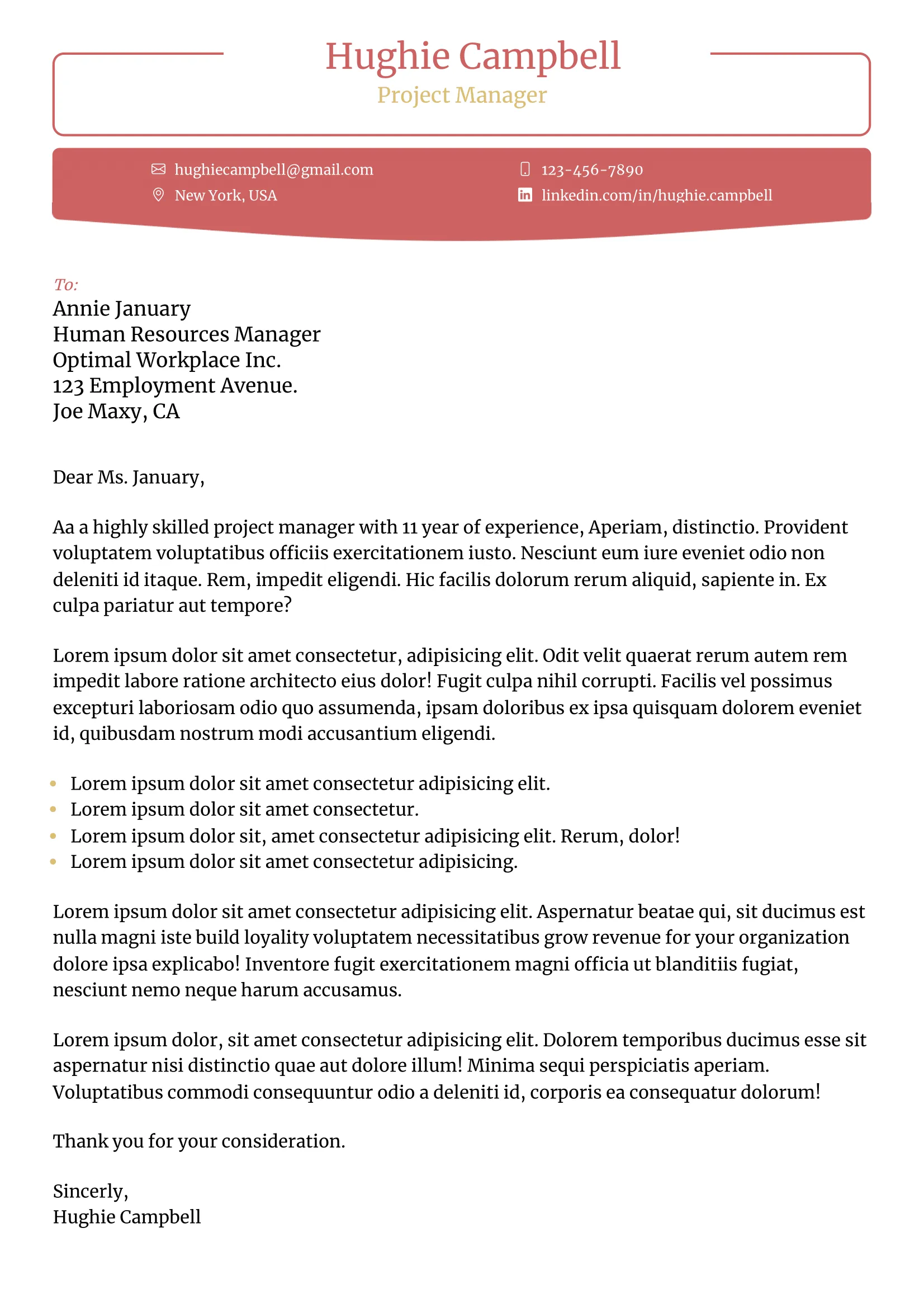
Modern templates feature contemporary designs, often incorporating elements like subtle color accents, stylish fonts, and creative layouts. They are perfect for fields such as marketing, design, and technology, where a more visually appealing presentation is valued. Modern templates help to stand out from the competition.
Professional Template
Professional templates strike a balance between traditional and modern styles. They maintain a sense of formality while incorporating design elements that enhance visual appeal. These templates are suitable for almost any industry, providing a polished and sophisticated look. They convey a sense of trustworthiness and competence, making them great for career advancement.
Template customization tips
Customizing your cover letter template helps personalize it to meet individual needs and job requirements. These tips will help guide you through the process.
How to Customize a Cover Letter Template
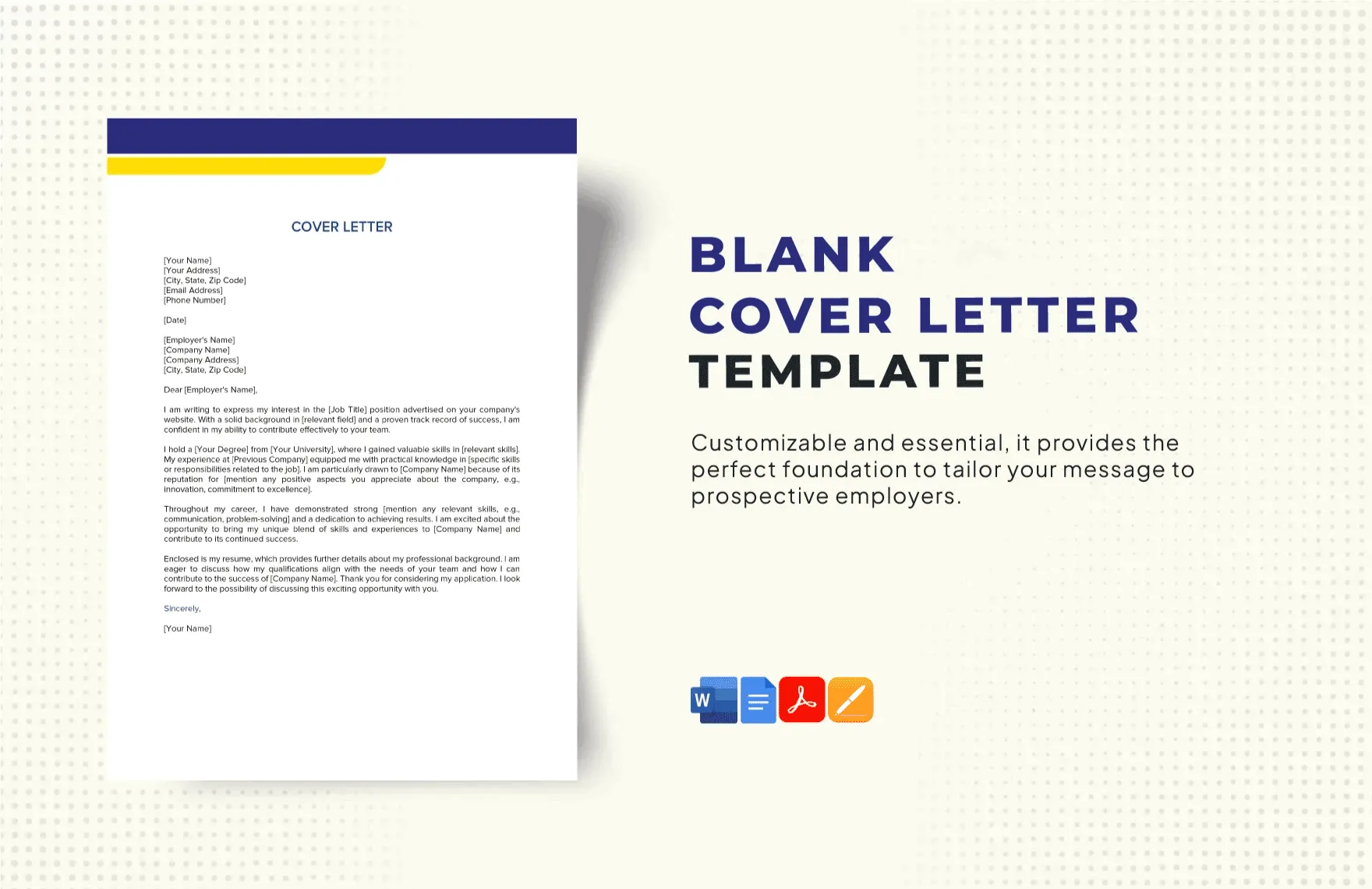
Once you’ve selected a template, the real work begins: customizing it to match your skills, experience, and the specific job you are applying for. Customization is essential to ensure your cover letter stands out and effectively conveys your value.
Editing the Content
Carefully review all the placeholder text in your chosen template and replace it with your own information. Ensure that your details align precisely with the job description and the company’s requirements. Use keywords from the job posting throughout your letter to demonstrate that you are a perfect fit. Tailor each paragraph to highlight your most relevant skills and experiences, providing concrete examples of your achievements.
Adjusting the Layout
While keeping the template’s basic structure, you can adjust the layout to suit your needs. Modify font sizes, spacing, and margins to enhance readability. Add or remove sections as required. If the template provides space for a professional profile, keep it concise. Ensure the overall design is clean and easy to navigate.
Adding Personalization
Personalize your cover letter to reflect your unique personality and the job’s demands. Include a genuine opening sentence, expressing your enthusiasm for the position and the company. Use a conversational tone that shows your personality and the ability to fit the company culture. Demonstrate your knowledge of the company, and express the value you can bring to the role, as a great professional.
Common Mistakes to Avoid
Even with the best cover letter templates, certain pitfalls can diminish your application. Be aware of these common errors, to help avoid them.
Using the Wrong Template
Do not select a template that clashes with the job or industry standards. For example, using a highly stylized template for a conservative industry might not be appropriate. Always choose templates that reflect the job’s needs.
Typos and Grammatical Errors
Typos and grammatical errors are unprofessional and can undermine your credibility. Proofread your cover letter meticulously, and use grammar check tools to avoid these mistakes. Always have a friend or colleague review it as well.
Ignoring the Job Description
Failing to tailor your cover letter to the specific job requirements is a missed opportunity. Study the job description carefully and emphasize the skills and experiences the employer seeks. Show the hiring manager how your qualifications align with their needs.
Where to Find Cover Letter Templates
Finding the perfect cover letter templates is simple with the right resources. Multiple websites and services provide a wide variety of templates.
Free Template Resources
Numerous websites offer free cover letter templates. These templates are a great way to begin without the need for any expenses. Be sure to find the best template for your needs.
Paid Template Resources
For more advanced and customizable options, consider paid template resources. Paid templates may offer more design choices, features, and customer support. Websites often provide professional designs that can save time and produce high-quality results. Be sure that the money spent is useful to you.
Tips for Writing a Standout Cover Letter
Make sure your cover letter stands out by following the best practices for cover letters and showcasing a unique message. Here are some tips for making your cover letter exceptional.
Highlighting Relevant Skills
Focus on the skills and experiences that align with the job requirements. Use keywords from the job description. Provide concrete examples to prove your abilities.
Showcasing Accomplishments
Quantify your accomplishments. Instead of just stating your responsibilities, describe your achievements, using numbers and data whenever possible. For example, mention how you increased sales, improved customer satisfaction, or streamlined processes. Use the STAR method (Situation, Task, Action, Result).
Tailoring to Each Job
Never use a generic cover letter. Always customize your letter for each job you apply for. Research the company and the role, and reflect your understanding in the cover letter. Addressing each job and company shows the hiring manager that you are truly interested.
Final Thoughts
Cover letter templates are a valuable tool in any job seeker’s arsenal. They simplify the writing process, ensuring you create a professional, compelling document. By using the right template, customizing it to fit your needs, and avoiding common errors, you can significantly increase your chances of getting hired. Remember to always tailor your cover letter to the job description and company culture.
Next Steps
Now that you know how to use cover letter templates, it’s time to take action: Find a template that suits your needs; customize the template with your information; proofread your cover letter carefully. Once completed, apply for jobs with confidence. Start your job search today and use a cover letter template to boost your success.
